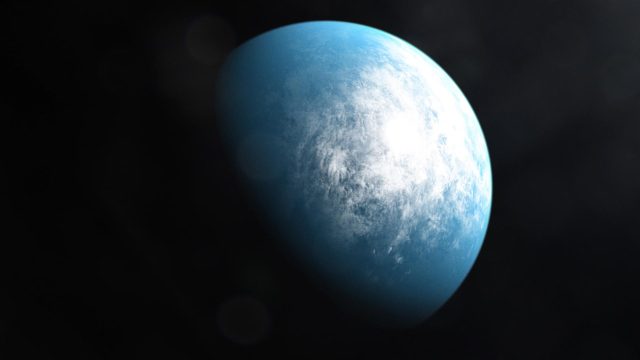Astronomers have made an astounding discovery – over 5,000 planets have been found outside of our solar system. The burning question remains: could any of these planets be home to life? To unravel this mystery, astronomers will require telescopes more powerful than any currently in existence.
As an astronomer specializing in astrobiology and the study of planets orbiting distant stars, I have spent the past seven years co-leading a team that is developing an innovative space telescope. This groundbreaking telescope, known as the Nautilus Space Observatory, has the potential to capture a hundred times more light than the James Webb Space Telescope – the largest space telescope ever constructed.
Unlike traditional space telescopes like Hubble and Webb, which rely on heavy mirrors, our proposed telescope utilizes a revolutionary thin lens. This lens is not only lighter and cheaper to produce, but it also offers the possibility of launching multiple units into orbit, creating a powerful network of telescopes.

The demand for larger telescopes
Exoplanets, which are planets orbiting stars other than our Sun, are the primary focus in the quest for extraterrestrial life. To study these distant and faint objects, astronomers require massive space telescopes capable of capturing vast amounts of light.
Current telescopes can detect exoplanets as small as Earth, but to delve into their chemical composition, a higher level of sensitivity is necessary. Even the Webb telescope, though powerful, can only provide limited insights into the atmospheres of certain exoplanets.
Advertisement
The James Webb Space Telescope, with a price tag exceeding $8 billion and a construction period of over 20 years, exemplifies the immense cost and effort involved in building such advanced telescopes. The next flagship telescope is not expected to launch until 2045 and is estimated to cost a staggering $11 billion. These ambitious projects are undoubtedly expensive, time-consuming, and result in a single, highly specialized observatory.
A revolutionary telescope design
In 2016, I had the privilege of joining a group of esteemed professors and NASA scientists, all experts in exoplanets and the search for extraterrestrial life, for a meeting in Los Angeles. Our objective was to envision the future of exoplanet space telescopes in the next 50 years.
During our discussions, we identified a major obstacle hindering the development of more powerful telescopes – the challenge of constructing larger mirrors and launching them into orbit. To overcome this hurdle, a few of us proposed revisiting an old technology known as diffractive lenses.
Unlike conventional lenses that rely on refraction to focus light, diffractive lenses utilize diffraction – the bending of light around corners and obstacles. By strategically arranging patterns on a glass surface, diffractive lenses can be created. These lenses were first invented in 1819 by French scientist Augustin-Jean Fresnel for lighthouses and are now commonly found in consumer optics such as camera lenses and virtual reality headsets.
Although thin diffractive lenses have been criticized for producing blurry images, advancements in clarity could make them a game-changer in astronomical observatories. By replacing mirrors or refractive lenses with diffractive lenses, space telescopes could become more affordable, lighter, and larger.
The cutting edge of astronomical technology just got a bit thinner, with a European-led research team having recently unveiled a revolutionary telescope design. This new concept for a space telescope has been designed for unsurpassed sensitivities and resolution, all in a telescope with a thinner primary mirror than that of NASA’s forthcoming James Webb instrument.
Earlier this month, a collaboration made up of scientists from Germany, the UK, France, and the Netherlands unveiled a preliminary concept for an ambitious new thin-lensed telescope. Utilizing a unique combination of lenses and mirrors, the team has developed a design which they believe could outshine the James Webb by a wide margin.
The primary issue faced by Webb is its size; the instrument’s primary mirror is enormous, a massive 6.5 meters in diameter. While huge mirrors can gather more light, permitting more distant observations, this massive size has caused the Webb to become expensive and complex to construct.
By contrast, the team’s new telescope design will utilize lenses and mirrors just a few tenths of a millimeter in thickness. Not only will this permit telescopic performance on par with the Webb, but the design could be constructed in a fraction of the time, as the components are much easier and cheaper to manufacture.
The reduced overall size also means the instrument has a much smaller physical footprint. This will permit it to be constructed for more modest budgets. And as a bonus, the telescope design can be readily adjusted to accommodate a variety of astronomical needs, including the latest advancements in imaging technology.
The scientific team stresses that a number of issues still need to be addressed before the concept could be put into full production. Nevertheless, the applicability of such a thin-lensed telescope for future astronomical endeavors is becoming more apparent. As always, the race to improve our view of the universe continues.




















